Glass link extensions: Structural and design advice for getting them right
Glass link extensions can be a striking and practical addition to many homes, but need careful structural and design advice in order to be truly successful. Here's what you need to know if you're considering one
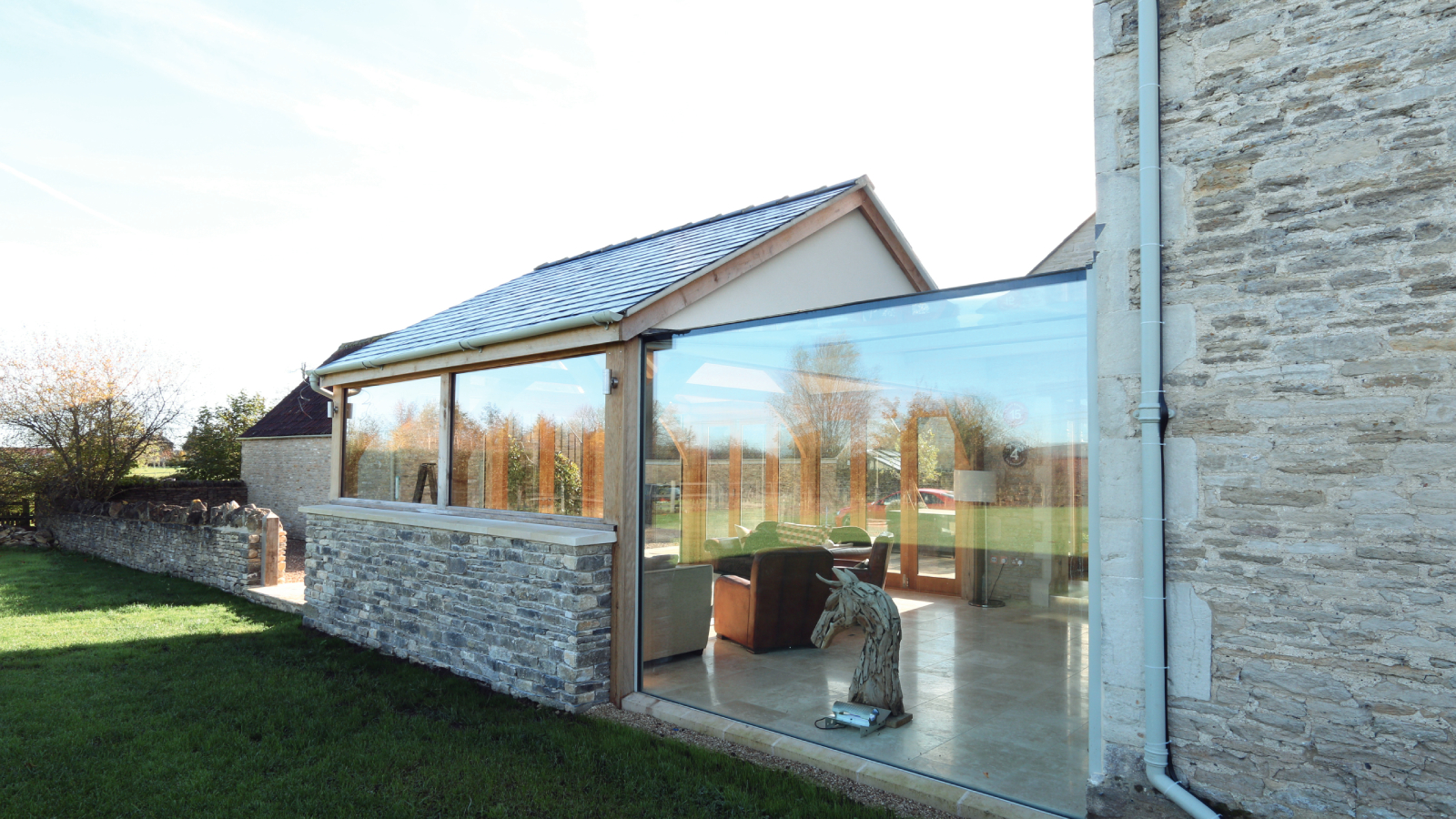
Glass link extensions can be a seamless way of adding a striking design feature to your home that also serves a practical purpose. Suitable for all types of house styles from contemporary homes to period properties, they differ from most glass extension ideas in that their main purpose is to provide connection between two different buildings.
However, whether you're linking a detached garage, an outbuilding or a barn conversion to an existing property, designing a link that seamlessly stitches two structures together, is no easy task. So what do you need to know to get it right?
Here's what the experts advise regarding design, structural and practical implications so you can make sure your glass link extension is a sparkling success.
Glass link extensions and their orientation
Although the structure, fixings and type of glass all play a major role as we'll establish further on, it's also important to remember the role of orientation when it comes to getting your glass link extensions right.
"If the glazed link is south facing and fully exposed to the sun, then solar control glass should be considered to reduce solar gain thus reducing power consumption for cooling," says Michelle Martin, senior marketing executive at IQ Glass.
Other features to create shading can be achieved using structural features such as overhangs and you'll also need to bear in mind the type of glass you use to ensure thermal efficiency.

Senior marketing executive at IQ Glass, Michelle possesses a strong passion for delivering great customer service, and her knowledge on windows and doors ensures she delivers the right product experiences to suit the client's needs.
Choose the right frame
To get a glazed link extension right you need to consider how it will be installed. Many homeowners prefer a solution that allows you to conceal the link’s supporting frame so that the glass appears to be the only thing present. But, this is not always possible.
"A glass link or glass box extension can be designed to be completely independent of the existing walls, fully supported by them, or partially restrained to stop horizontal movement," explains Dave Heeley, associate director of residential projects at Design4Structures.
"If the extension is to be fully independent, the support frames (or potentially glass beams and columns if frameless) need to be much stronger and stiffer than they would be otherwise. This would make them larger and more expensive but does avoid issues with differential movement or thermal bridges between cold parts of the building and warm parts.
"Frames to glazing are usually steel or aluminium,"adds Dave, "whereas frameless solutions are supported by structural glass walls, beams or fins, but the simplest way to connect an extension to an existing wall is to fix the frame directly to it.
"If an invisible connection is desired this can potentially be achieved by ‘chasing’ into the wall to hide the fixing," adds Dave. "However, this affects the structural capacity of the wall and the consequences would need reviewing by a structural engineer to make sure the stability of the wall is not compromised."
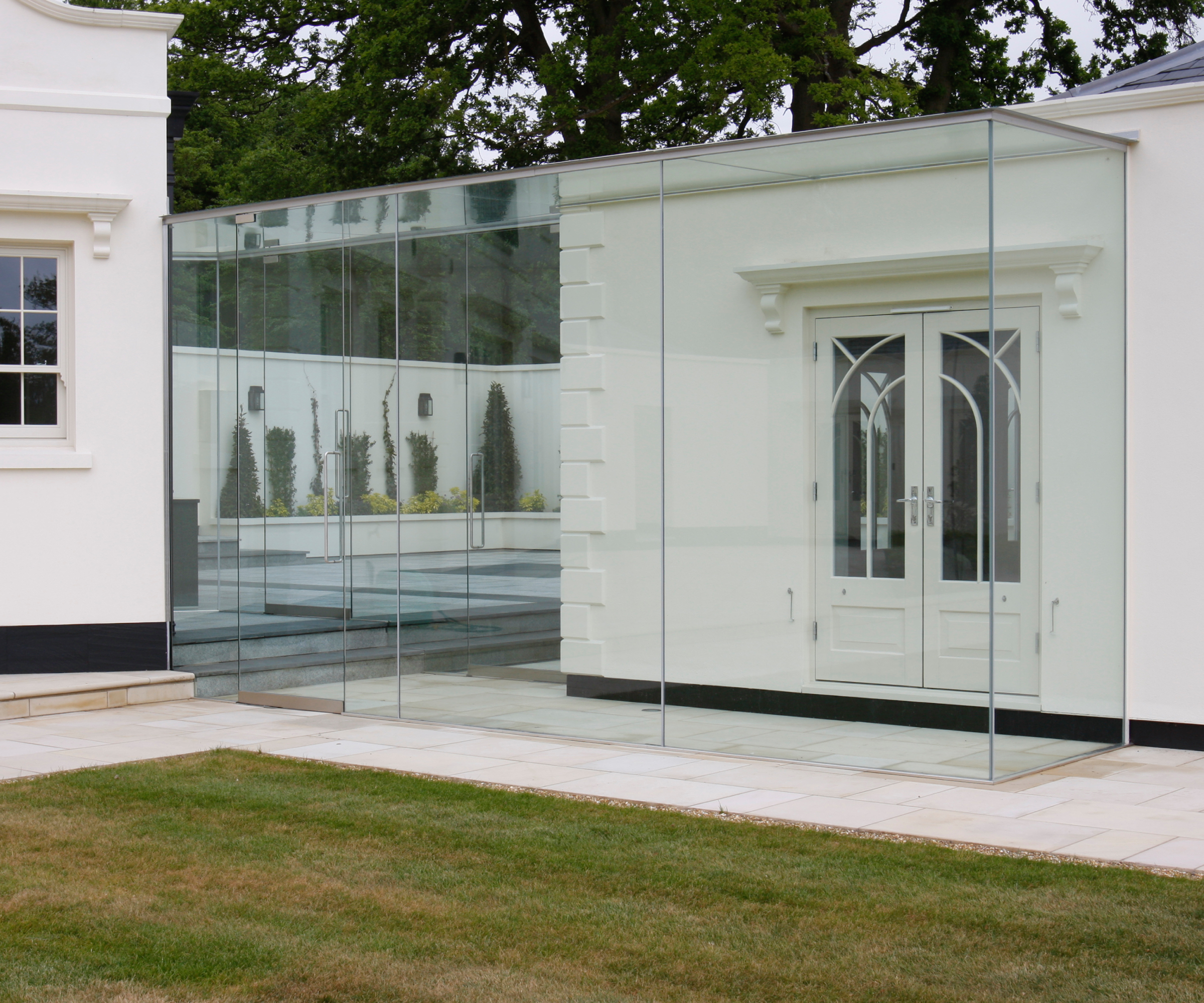

Dave Heeley is a chartered structural engineer with over 17 years of experience in structural engineering consultancy. He has delivered schemes of various scales and complexity in the UK and abroad, many of which have won RIBA Conservation and Material awards.
Understand the role of wall thickness
"Supporting or restraining glass link extensions from existing walls is usually most efficient," says Dave Heeley, "but does require careful detailing to avoid creating a cold bridge or cracking, from points of support moving differently to each other.
"If you are chasing out an existing wall then the structure and thickness of that wall becomes very important. A thick wall and one that is lightly loaded is affected less by cutting a slot into it, than a thin or heavily stressed one would be.
"For this reason, thick stone walled structures lend themselves well to chasing and hiding connections," suggests Dave, "whereas a more modern cavity wall building will have a thinner wall to connect to and may require some structural intervention to accommodate a slot cutting into it.
"If the wall is reinforced concrete, it may be difficult to cut the slot without affecting the reinforcement. A framed structure or one with lightweight cladding, may not have a suitable external wall to take the load of the glass link and would need fixing back into the load bearing parts of the wall buildup."
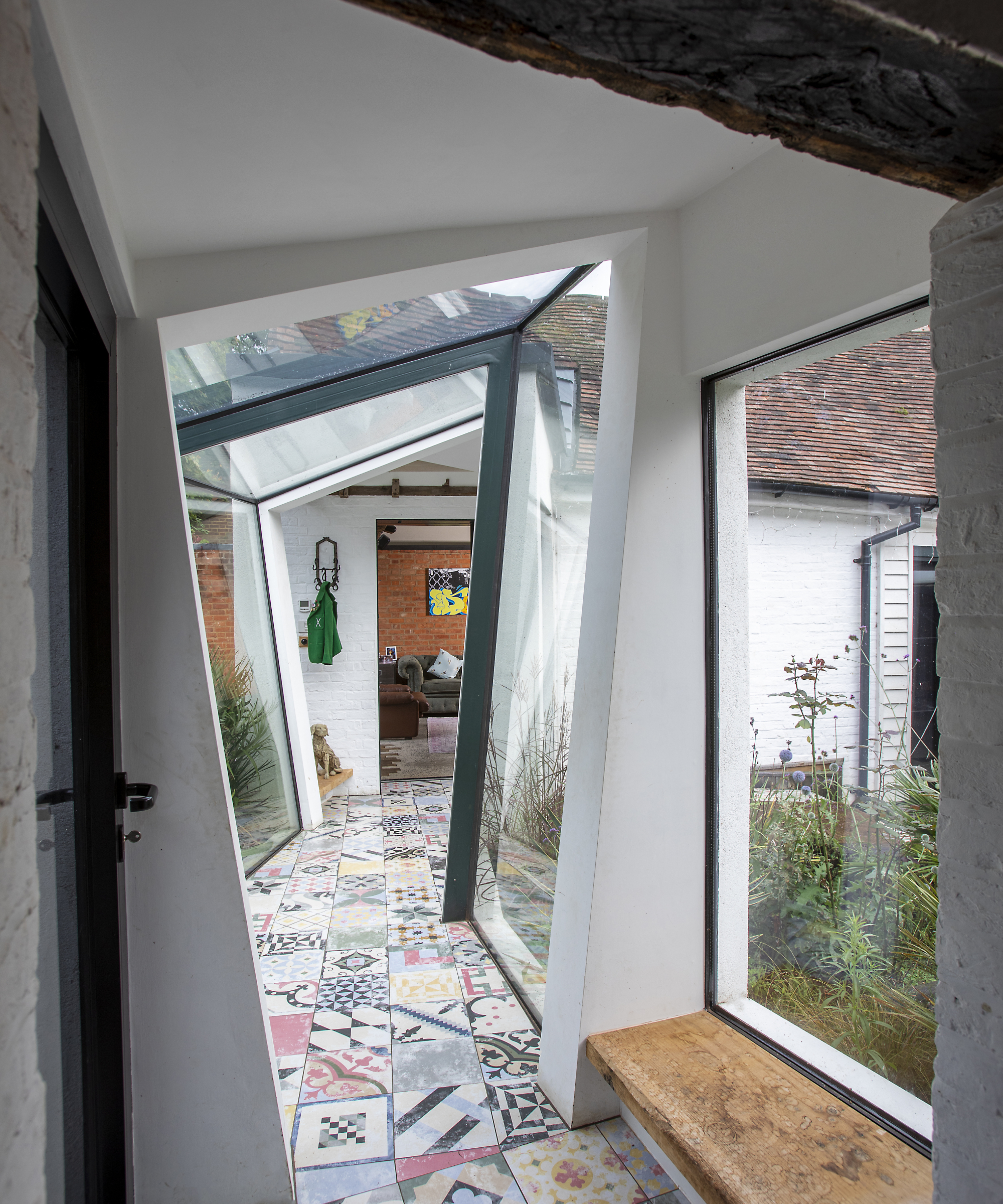
Structural silicone vs bolted connections
When it comes to the fixings you'll need for glass link extensions, you'll likely be discussing structural silicone and bolted connections. But what's the difference and will you always need both?
"Structural silicone is often used to connect glazing to their frames, but can also be used connecting glass to glass at right angles; such as connecting the treads to the stringer in an all glass staircase," says Dave Heeley.
"The advantages of it is that it is visually unobtrusive and can accommodate movement between elements well. It also spread loads evenly and reduces the risk of cracking at connection positions.
"However, these types of connections have less capacity than bolted connections and can be less resilient to long term loads – in some cases they can peel away or creep (move) over time.
"Bolted connections," explains Dave, "are typically used where larger, more long term load bearing capacity is needed or where larger elements (such as glass beams or fins) are being connected to each other.
"They can still be detailed in an attractive manner but need careful design to avoid local cracking around the bolts."
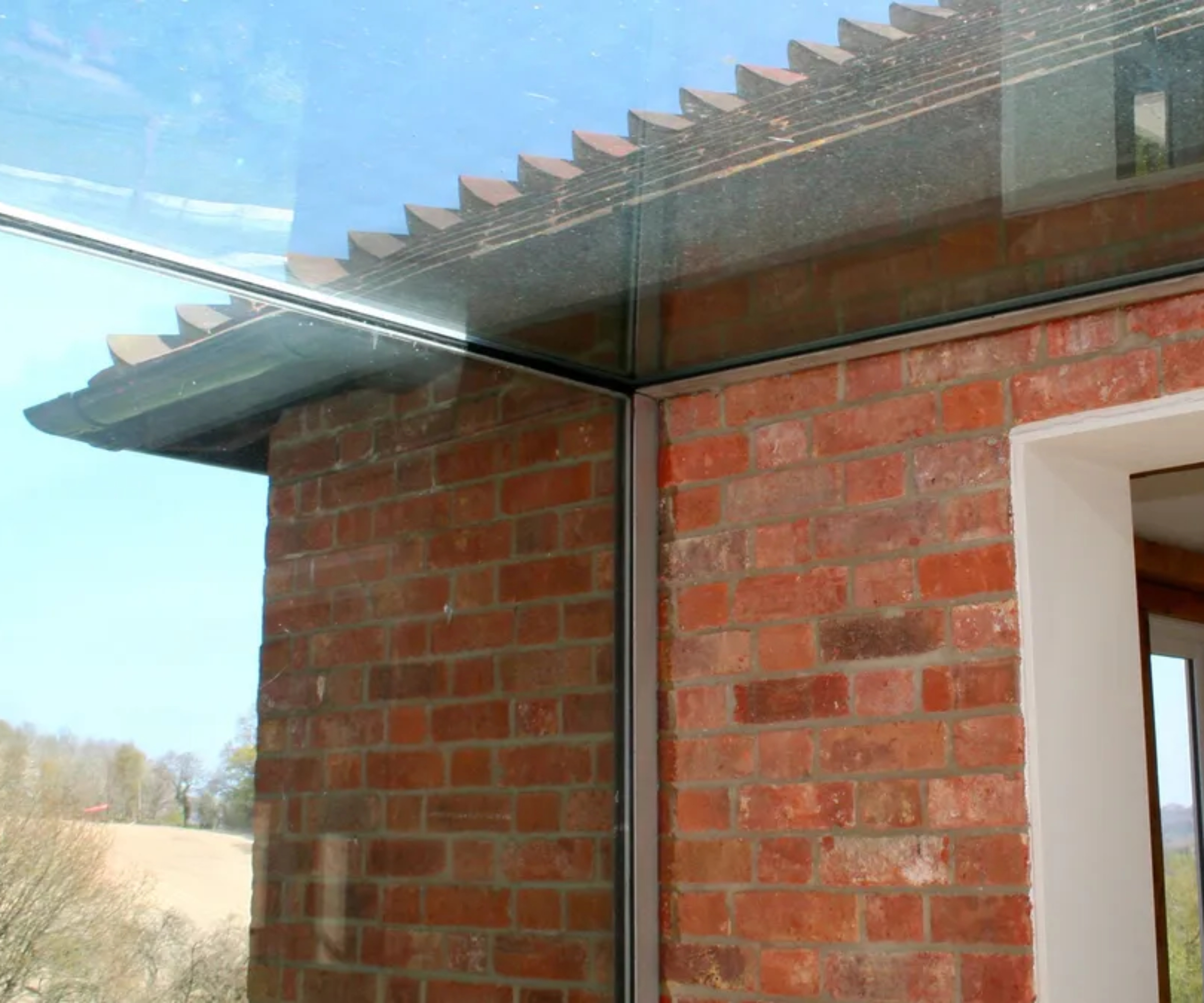
Pick the best glass
The glass specified for glass link extensions will always fall into one of two categories: laminated or toughened.
- Laminated is glass that if damaged will not shatter into a million pieces and immediately fall away - it’s what’s used in car windscreens.
- Whereas toughened glass is much stronger and will take more damage before shattering, but when it does get damaged, it will do just that - shatter.
"Glass links can be created using single glazing or insulated glass (double or triple glazing)," says Michelle Martin, "but if the glass link space needs insulating properties then double glazing will be specified as a minimum."
"Toughened glass tends to be tougher and stronger (as the name suggests)," adds Dave Heeley, "but does have the disadvantage of shattering more completely if it fails. As a result, laminated glass is often used where impact loading or the consequences of this are more onerous, such as in suspended glass floors."
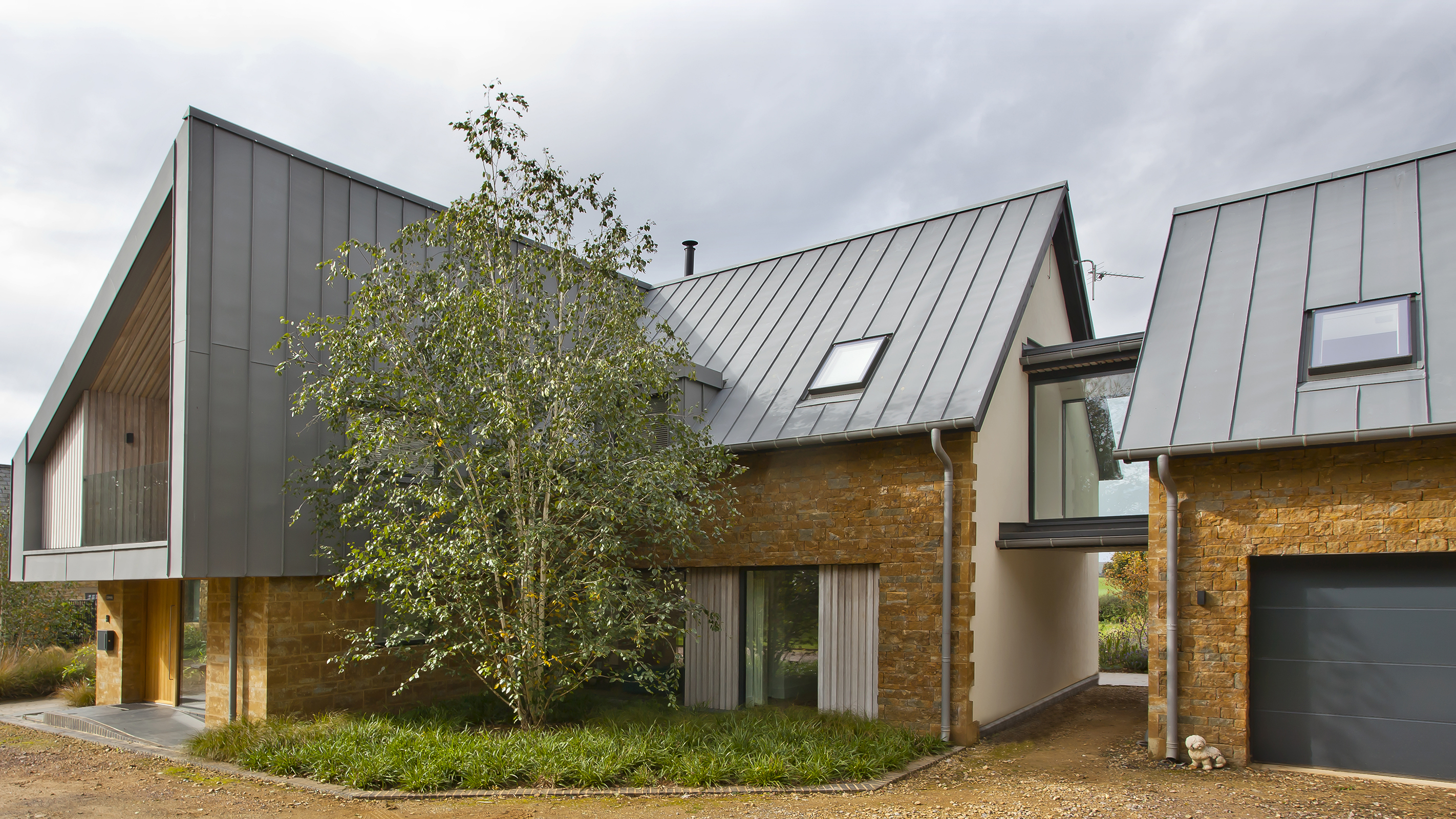
Ventilation requirements
Although glass link extensions are essentially a passage from one building to another, it’s still important to consider ventilation - especially if you will be using the space for more than just passing through.
If you are looking at ways of creating natural house cooling ideas at the design stage, you do have options.
"Opening elements, such as glass hinged doors, pivot doors, or sliding patio doors can be integrated into the structural glass link," says Michelle Martin, "but this means the impact of the opening style on the surrounding space needs to be considered."
Make there is sufficient space for doors to open inwards or outwards, as well as considering any obstructions from above if you are looking at roof lights as an alternative means of home ventilation.
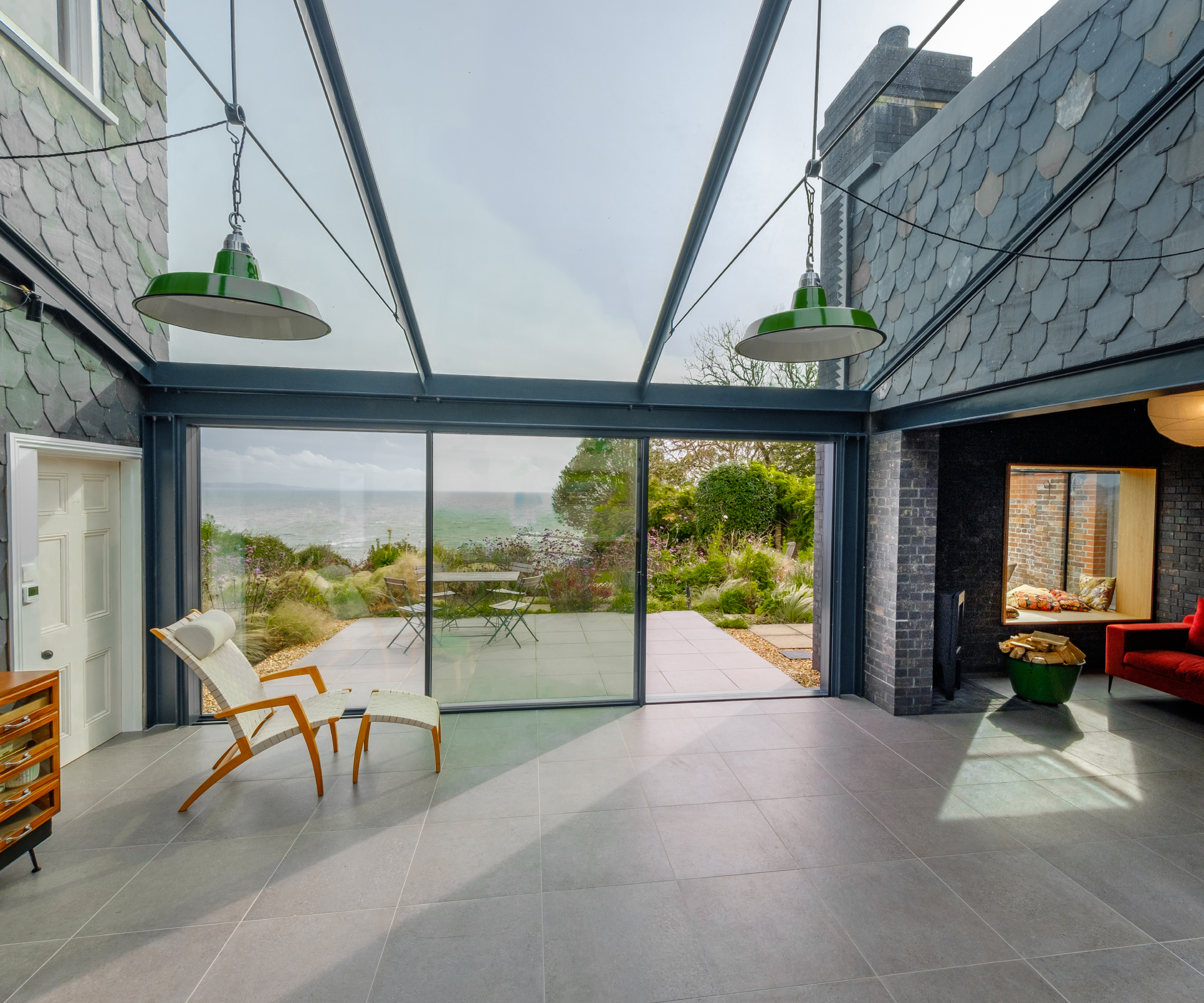
Be aware of the impact of weather
If you are using a glass link extension to join two different types of building, it's important to understand the impact the weather has on each structure. While orientation will affect the heat and solar gain, other types of weather can also influence how glass link extensions are designed.
"It is important to take into account the position of the link extension and what types of building it is linking," explains Dave Heeley. "Connecting a new building to an existing one, or between two buildings which behave differently in the wind, for instance, can potentially run the risk of one side moving more than the other and causing cracking,"
"In these cases careful collaboration is needed between the architect, structural engineer and glazing designer to accommodate movements."
Size well for cost purposes
While striking, a glass link can be an expensive feature to add to your home.
The most affordable glazed links will be those that span the shortest distance between new and old buildings and use standard sizes of extruded steel or aluminium rather than specialist lengths and shapes for roof pitches.
"There are no height restrictions with glass link extensions," says Michelle Martin, "however, the larger the elevations of glass, the more expensive they are to manufacture.
"Plus, there will be extra logistics involved to carry them and install them on site. Single elevations of long glass installed laterally can also be prone to deflection. However, we do have our own frameless glass structural beams to support expansive panels if this is the client's preferred design choice."
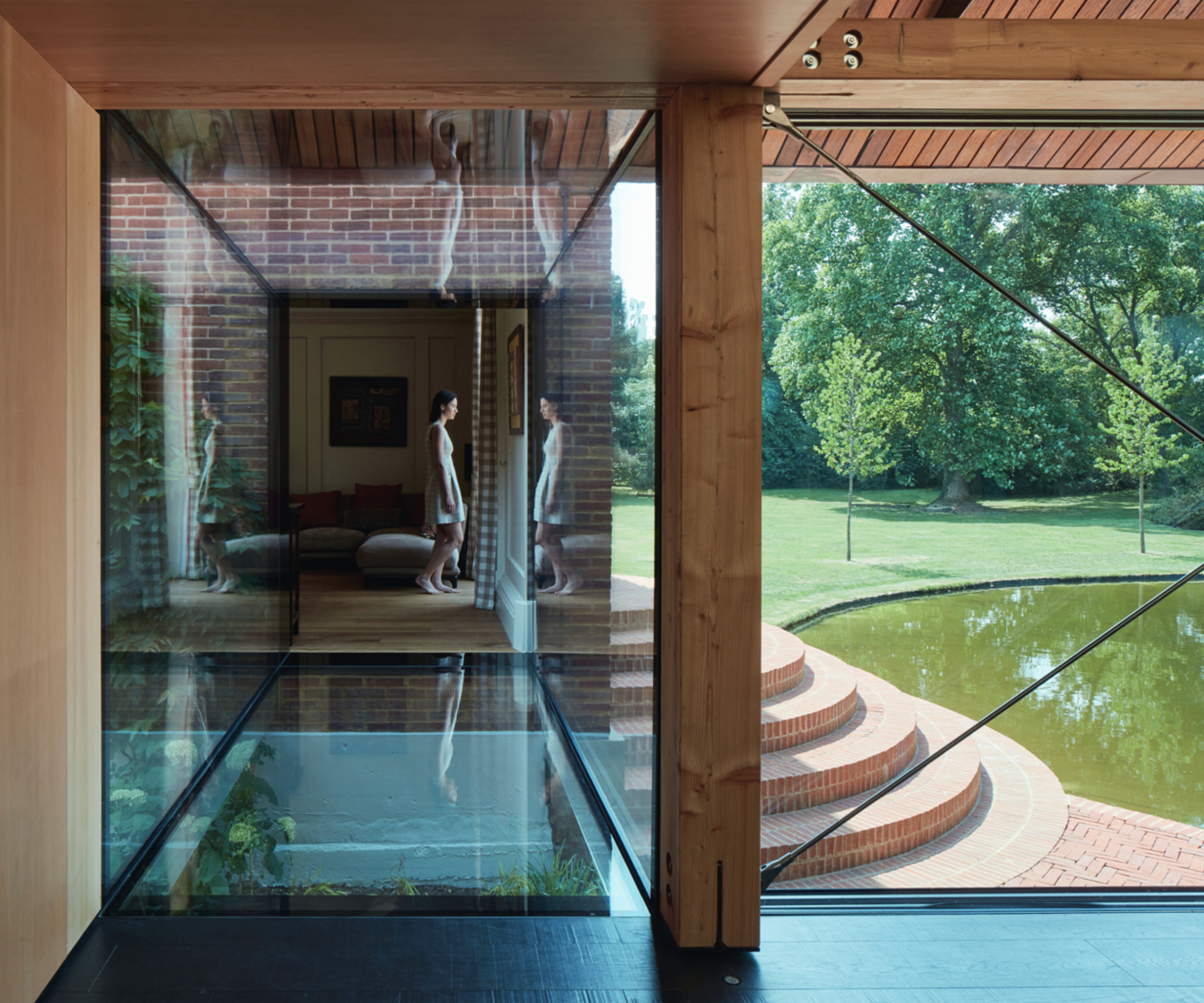
Consider roof pitch
The roof of a glazed link could be solid laminated glass or, alternatively, you could opt for an insulated lantern arrangement, which could be flat or pitched. Either way, a fully-glazed roof in glass link extensions or other extensions with glass roofs should never be totally flat.
"The pitch of the roof is important to ensure water flows off the roof and does not pool on the surface, as this can create larger loading and damage connections," explains Dave Heeley.
"A pitch of larger than 7 degrees is often recommended, although shallower pitches can be possible with discussion with the glazing manufacturer."
Alternatively, designing a solid roof with a central glazed roof lantern will draw light into the centre of the link. The main challenge here will be the thickness. When it comes to roofs, the easy way to get around this is to favour a flat roof with solid laminated glass. The glass specified for such a roof (or wall), is not likely, even if laminated in several sections, to be more than 75mm at the very most.
Planners may favour glass links
When it comes to securing planning permission for a glass links, there’s no getting around the need to work within the bounds of what your local planning authority will deem appropriate. Therefore you should have this in mind from the very start of your project.
However, "they are also sometimes preferred by planning consultants of sensitive builds as they provide a clear distinction between old and new," notes Michelle Martin.
If your house is listed, in a conservation area or an area of outstanding natural beauty, you will have to enter into dialogue with the local conservation officer. Conservation officers are there to advise and protect any heritage assets within a defined area. They will judge any proposal on its merits.
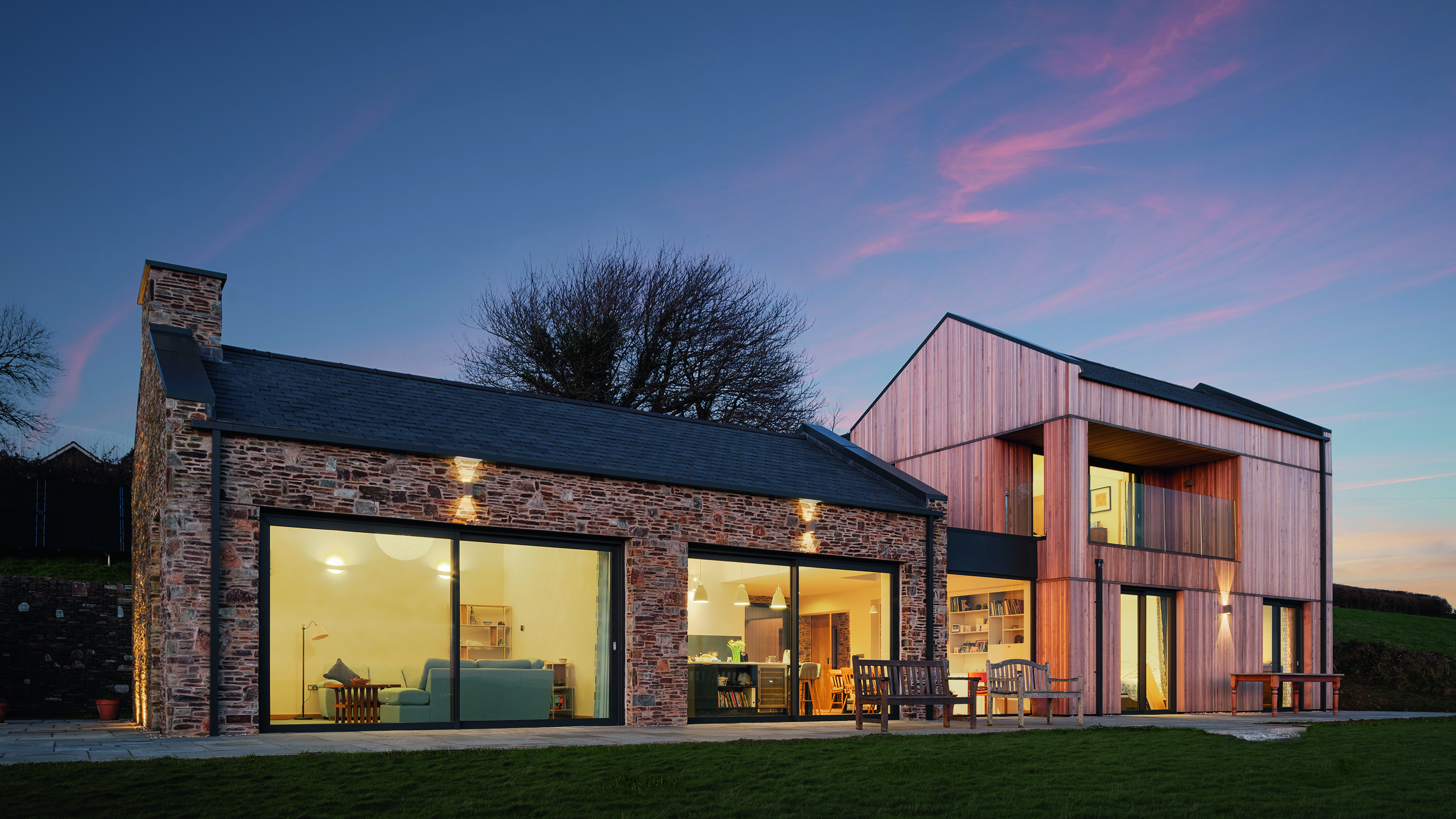
As a final point, don't forget to think about maintenance when it comes to glass links - and how you might minimise it. All that glazing will need to stay clean if it is to remain a visual asset to your home.
There are specialist coatings that can be applied to the glass to assist with maintenance and reduce the amount of residue left on the it, including a range of water-repellant applications.
For more glazing inspiration for your self-build, renovation or extension, take a look at our glazed kitchen extension ideas or consider the inside of your home instead and think about internal window ideas that could elevate your home design.
Get the Homebuilding & Renovating Newsletter
Bring your dream home to life with expert advice, how to guides and design inspiration. Sign up for our newsletter and get two free tickets to a Homebuilding & Renovating Show near you.

Sarah is Homebuilding & Renovating’s Assistant Editor and joined the team in 2024. An established homes and interiors writer, Sarah has renovated and extended a number of properties, including a listing building and renovation project that featured on Grand Designs. Although she said she would never buy a listed property again, she has recently purchased a Grade II listed apartment. As it had already been professionally renovated, she has instead set her sights on tackling some changes to improve the building’s energy efficiency, as well as adding some personal touches to the interior.
